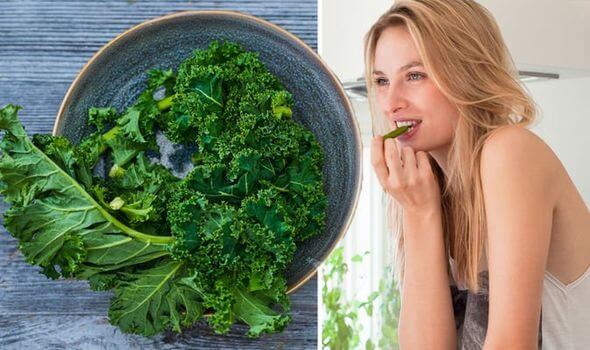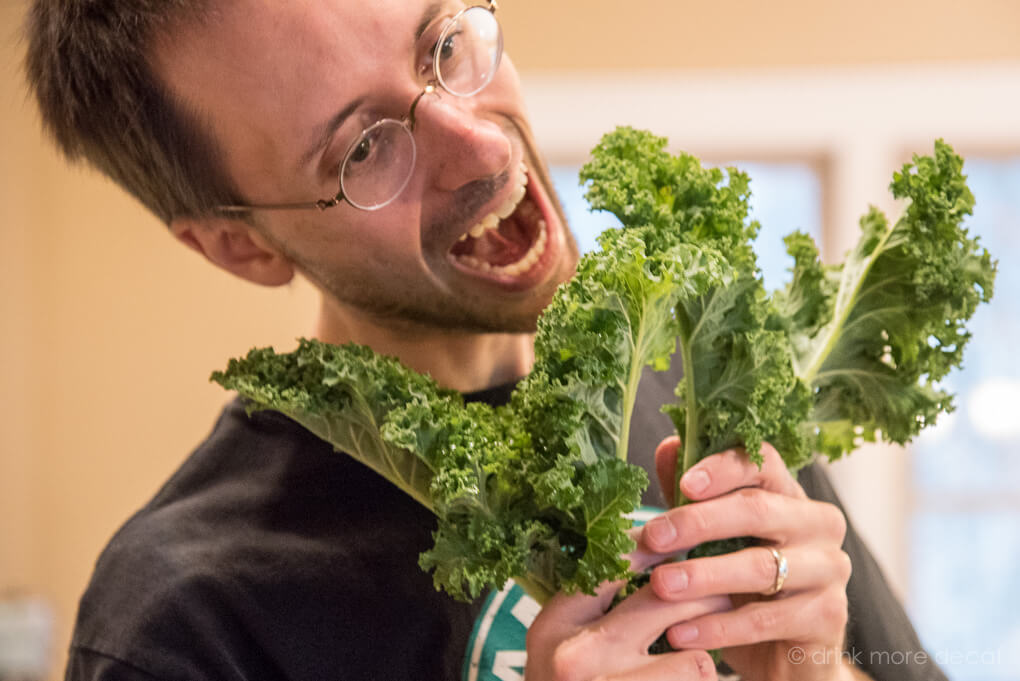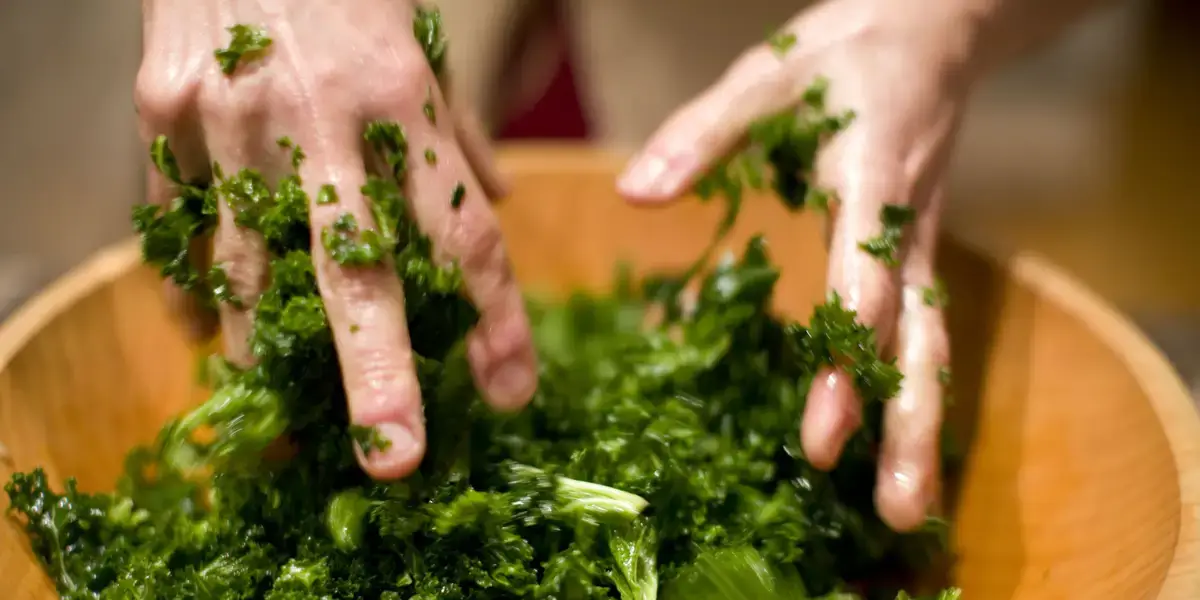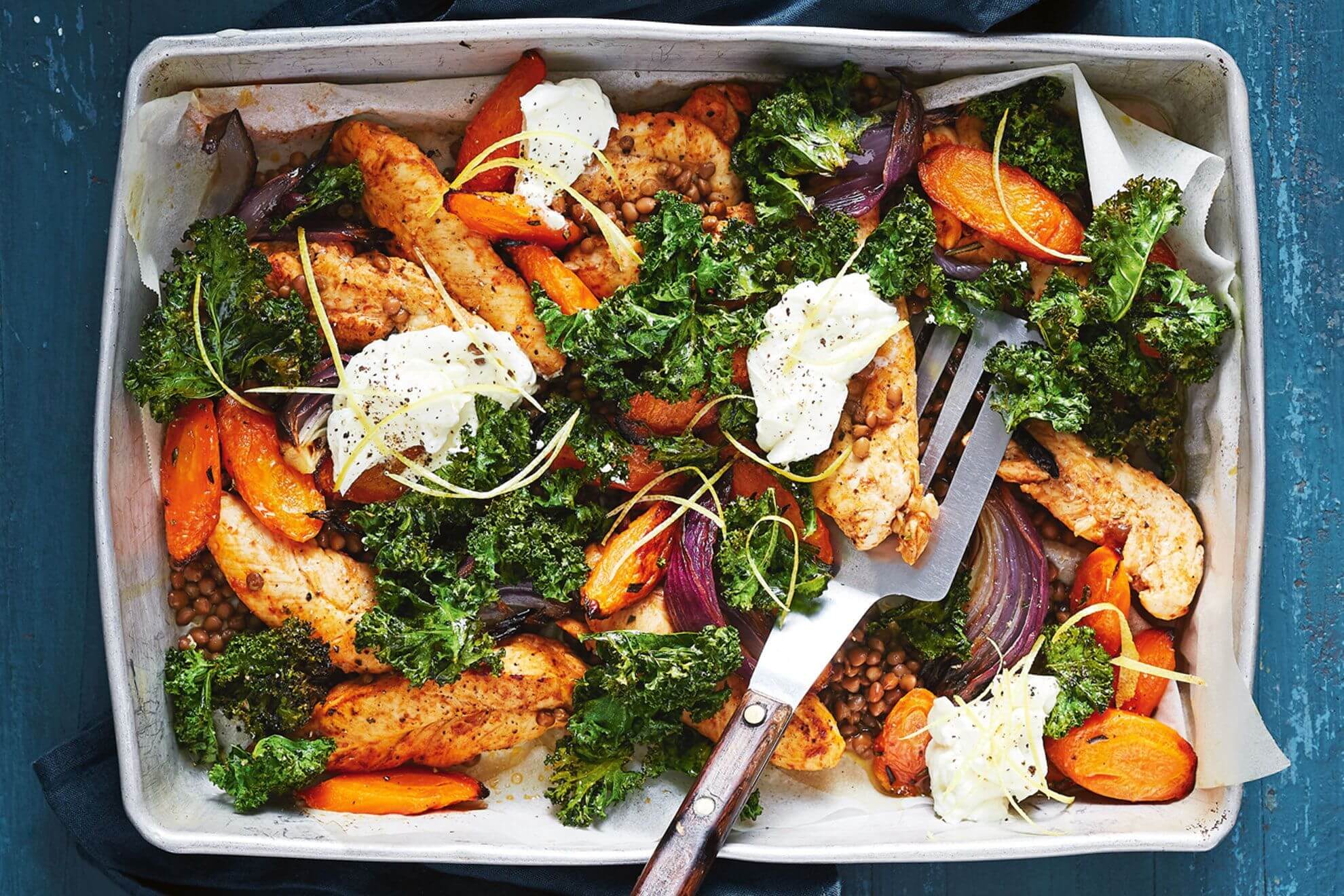Have you ever wondered, “Is kale good for you?” Well, let me cut to the chase—absolutely! This leafy green powerhouse isn’t just another health trend; it’s a bona fide superfood that’s been making waves in the nutrition world.
As someone who’s been in the health and wellness industry for over a decade, I can confidently say that kale is one of the most nutrient-dense foods you can add to your diet.
But hold on! Before you start tossing kale into every meal, there are a few things you should know.
While it’s packed with an array of vitamins, minerals, and antioxidants that can boost your health in numerous ways, kale also has a few quirks that might not sit well with everyone.
So, let’s dive into the world of kale and uncover its benefits, potential side effects, and the best ways to enjoy this green marvel.
A Brief History
Before we dive into the nutritional nitty-gritty, let’s take a quick trip back in time. Kale isn’t some newfangled health food—it’s been around for millennia! Originating in the eastern Mediterranean, kale was a staple in ancient Greek and Roman diets.
Fast forward to the Middle Ages, and it was a common crop across much of Europe, especially in Scotland, where it thrived in the cold climate.

During World War II, kale saw a resurgence in the UK. The “Dig for Victory” campaign encouraged people to grow kale in their gardens because of its high nutrient content and hardiness.
It wasn’t until the 21st century, though, that kale became a global health sensation. From ancient times to your local supermarket, kale has had quite the journey!
Why Kale is a Nutritional Powerhouse
Let’s kick things off by talking about why kale has earned its superfood status.
Trust me, it’s not just hype—the nutritional profile of kale is off the charts! When I first started researching kale, I was blown away by its vitamin and mineral content.
A Treasure Trove of Vitamins
Kale is bursting with essential vitamins that your body craves. Here’s what you’ll find in just one cup of raw kale:
- Vitamin K: A whopping 68% of your Daily Value (DV)! This vitamin is crucial for blood clotting and bone health.
- Vitamin C: 22% of your DV. Hello, immune booster and skin savior!
- Vitamin A: 6% of your DV, supporting eye health and more.
But that’s not all! You’ll also get a good dose of riboflavin (Vitamin B2), which plays a key role in energy production. It’s like a multivitamin in leaf form!

Minerals Galore
Don’t think kale is just about vitamins. It’s also loaded with essential minerals:
- Manganese: 8% of your DV, supporting bone health and metabolism.
- Calcium: 4% of your DV. Yes, you can get calcium from greens!
- Iron and Magnesium: In smaller amounts, but every bit counts.
When I tell my clients about kale’s mineral content, they’re often surprised. “I thought I needed dairy for calcium,” they say. Well, kale proves that green can be just as good!
Antioxidant Army
Here’s where kale shines—its antioxidant power. Packed with beta-carotene, quercetin, and kaempferol, kale is like an army fighting off harmful free radicals.
These compounds don’t just support heart health; some studies suggest they may even slow the growth of cancer cells. Talk about a green guardian!
Kale for Weight Loss
Now, let’s talk about something many of you are curious about—is kale good for weight loss? The short answer?
Absolutely! When I’m helping clients manage their weight, kale is often my go-to recommendation. And it is one of the best keto diet foods.
Low Calorie, High Impact
First off, kale is incredibly low in calories. I mean, we’re talking about a food that lets you eat a lot without packing on the pounds.
A cup of raw kale has just about 33 calories. That’s right—33! You could have a massive kale salad and still be under 100 calories. Try doing that with pasta!
The Fiber Factor
But it’s not just about being low-cal. Kale is rich in fiber, and that’s a game-changer for weight loss.

Fiber keeps you feeling full longer, which means you’re less likely to reach for that bag of chips an hour after lunch.
Plus, it aids digestion, keeping things moving smoothly. Trust me, a happy gut makes weight loss much easier.
Hydration Helper
Another cool thing about kale—it’s got a high water content. Why does this matter? Because staying hydrated can help you feel full.
Sometimes when you think you’re hungry, you’re thirsty. Kale helps tackle both, making it a smart choice when you’re trying to slim down.
Is Kale Good for Your Skin?
Okay, beauty buffs, listen up! Is kale good for your skin?
You bet it is! In my years advising on nutrition and skincare, I’ve seen how certain foods can transform skin—and kale is a superstar in this arena.
Vitamin C
Remember that 22% of your daily Vitamin C I mentioned earlier? Well, that’s fantastic news for your skin.
Vitamin C is a powerhouse when it comes to brightening your complexion and fading those pesky dark spots.
It also helps your body produce collagen, which keeps skin firm and youthful. It’s like having a natural brightening serum in your salad!
Sun Shield in a Leaf
Here’s something that blew my mind—kale contains carotenoids, which are pigments that help protect your skin from sun damage.

While I’m not saying to skip sunscreen (please don’t!), adding kale to your diet can provide an extra layer of defense against those aging UV rays.
Hydration from the Inside Out
We often think of hydration in terms of drinking water, but the foods you eat matter too.
Kale’s high water content hydrates your skin from within, giving you that plump, dewy look that’s all the rage. It’s like applying a hydrating mask, but you’re eating it instead!
Anti-Aging Action
With its combo of vitamins and antioxidants, kale is practically an anti-aging superfood. It helps boost cell turnover and fights off the free radicals that lead to wrinkles and fine lines.
I’ve had clients tell me their skin feels tighter and looks brighter after they’ve been on a kale kick.
Is Raw Kale Safe to Eat?
Now, let’s tackle a question that often comes up: Is raw kale safe to eat?
It’s a valid concern, and the answer isn’t a simple yes or no. While raw kale is incredibly nutritious, it does have some quirks that might not agree with everyone.

The Goitrogen Dilemma
The main issue with raw kale is its goitrogen content.
Don’t let the fancy word scare you—goitrogens are compounds that can interfere with your thyroid’s ability to absorb iodine, which is essential for producing thyroid hormones.
According to the National Library of Medicine, cruciferous vegetables like kale contain these goitrogenic compounds. If you have thyroid issues, eating a ton of raw kale might not be the best idea.
Cooking
But don’t cross kale off your list just yet! Cooking kale significantly reduces its goitrogen levels.
So, if you’re concerned about thyroid health, opt for steamed, sautéed, or baked kale.
Let’s break down some cooking methods:
- Steaming: The gold standard. It retains most nutrients while reducing goitrogens.
- Boiling: Reduces goitrogens but also leaches out water-soluble vitamins.
- Stir-frying: Quick and tasty, it preserves more nutrients than boiling.
- Baking: Makes crispy kale chips but can degrade heat-sensitive vitamins.
Other Potential Side Effects
Even if you don’t have thyroid issues, raw kale might cause some discomfort. Some people experience bloating, gas, or constipation when they start eating a lot of kale. Why?
It has a high fiber content. To avoid this, introduce kale gradually into your diet and drink plenty of water. Your gut will thank you!
Kale for Men
Fellas, listen up! You might think kale is just another health trend targeted at women, but you’d be dead wrong. Is kale good for men?

Absolutely, and in some pretty unique ways.
Prostate Protection
One area where kale shines for men is in prostate health. The antioxidants in kale, particularly beta-carotene, have been linked to a reduced risk of prostate cancer.
Given that this is one of the most common cancers in men, adding kale to your diet is a smart move. It’s like giving your prostate a green shield!
Heart Health Hero
Let’s face it—heart disease is a major concern for men. The good news? Kale’s got your back.
Its fiber content helps lower cholesterol levels, while potassium helps regulate blood pressure.
Both are key factors in keeping your heart healthy. So, when you’re grilling that steak, make sure there’s some kale on the side!
Muscle Matters
Are you hitting the gym hard? Kale can be your post-workout buddy. It’s rich in iron, which is crucial for delivering oxygen to your muscles, helping them recover and grow.
Plus, the Vitamin K in kale supports bone health—essential for any guy who’s lifting heavy. Think of kale as your natural performance enhancer.
How Much Kale is Safe?
By now, you’re probably convinced that kale is good for you—and you’re right! But like anything in life, moderation is key.

So, how much kale can you safely eat?
No One-Size-Fits-All
First off, there’s no universal “safe” amount of kale. It depends on factors like your health status, medications, and overall diet.
For most healthy people, having kale a few times a week is perfectly fine. I often suggest starting with a cup of cooked kale 2-3 times a week and seeing how you feel.
Blood Thinner Alert
If you’re on blood thinners like warfarin, you need to be extra careful.
According to the Mayo Clinic, kale’s high Vitamin K content can interfere with these medications. This doesn’t mean you can’t have kale, but you must keep your intake consistent.
Sudden changes in Vitamin K consumption can mess with your medication’s effectiveness.
Always consult your doctor to determine a safe amount.
Kale Varieties
Did you know there’s more than one type of kale?

Each variety has its flavor profile and texture:
- Curly Kale: The most common type. It’s slightly bitter with peppery notes.
- Lacinato (Dinosaur) Kale: Darker and less bitter, with a nuttier taste.
- Baby Kale: Tender and milder, perfect for those new to kale.
Try different types to see which suits your palate best. I find that kale skeptics often convert after trying Lacinato or baby kale!
Kale vs. Other Greens
Is kale superior to other leafy greens? Let’s compare:
- Spinach: Higher in iron and magnesium, but kale wins for calcium and Vitamin K. Check out some more health benefits of spinach.
- Swiss Chard: Richer in Vitamin E, but kale leads in Vitamin C and fiber.
- Collard Greens: Similar to kale, but with less Vitamin C and more calcium.
Each green has its strengths. My advice? Rotate them! You’ll get a broader spectrum of nutrients and keep your taste buds engaged.
Long-Term Benefits
We’ve covered kale’s immediate perks, but what about long-term benefits?
Research suggests some exciting possibilities:
- Cancer Prevention: A study found that kale’s sulforaphane may inhibit colon cancer cell growth.
- Brain Health: The Vitamin K in kale might slow cognitive decline, according to a study in Neurology.
- Longevity: While not kale-specific, a diet rich in greens is linked to a longer life in Blue Zone regions.
Delicious Kale Recipes to Try
Knowing kale is good for you is one thing, but enjoying it is another!

Here are some recipes to make kale not just healthy, but delicious:
- Lemon-Garlic Sautéed Kale
-
-
- Sauté kale with olive oil, garlic, and lemon juice. Simple yet tasty!
-
- Kale Caesar Salad
-
-
- Massage kale with Caesar dressing, add parmesan and croutons.
-
- Kale Smoothie
-
- Blend kale, banana, mango, Greek yogurt, and almond milk.
Wrapping Up
So, is kale good for you? The resounding answer is yes! This nutrient-dense, antioxidant-rich green offers a plethora of benefits:
- Weight loss support
- Skin health booster
- Heart disease fighter
- Men’s health enhancer
But like any superfood, it’s not without its quirks. Some people must be cautious with raw kale due to its goitrogens, while others should watch their intake because of medications or health conditions.
The key is to enjoy kale in moderation and, when in doubt, cook it.
Throughout my career, I’ve seen kale transform people’s health—from helping them shed stubborn pounds to giving them a radiant complexion. It’s not magic; it’s just delicious nutrition packed into crisp, green leaves.

